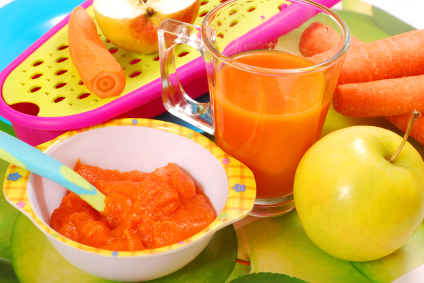Promoting good eating habits

Eating with your child is a good way to develop good and promote positive eating habits.
Establishing good eating habits promotes modelling the way you would like your child to associate food and mealtimes, behave and the manners you would like to encourage.
We acknowledge it may not always be possible to sit and engage with your child at all meal times.
Be mindful that sitting with them whenever you have the opportunity, especially from a young age, influences how their eating habits are formed and their food associations.
For example, if you have a fussy eater, when you are sitting with them in a relaxed environment and eating with them then you can encourage them to try foods.
It promotes conversation and a positive food association rather than a stressful meal time and food association.
Sitting with your child enables them to learn meal times are for talking and interacting, not playing.
Meal times should be enjoyable.
It is a great opportunity to interact positively with your child.
Developing good eating habits
- It is important to be provide food to a child when they are seated. It’s not recommended to follow the child around with the food on a spoon. This is unsafe and sets the child up for wrong meal time behaviour. Not to mention that it is actually taxing for all involved.
- Allow the child to decide what they would like to eat off their plate. Providing the child the autonomy to decide which food they eat first encourages the child to make decisions and take control. You have already decided upon the selection that is on their plate so provide them the choice. If they don’t eat what is on offer, don’t offer more food. By offering additional food after their initial refusal of the first offering promotes the child demanding the types of food they want. It promotes fussy eating and poor food choices. If they refuse to eat any of the foods then remain calm and leave it at that.
- Monitor the child’s eating in the next few hours or the following day to ensure they are eating enough food but on the whole a child will not starve themselves. In fact it generally has the opposite effect in that they will soon realise that what is on offer is all that is on offer.
- A follow on from this is also not offering more food of their choice later. This shows the child to wait and then they can make their own choices. When this happens it is usually it is not a preferred food. If you must offer something else offer a small, healthy snack later, but sometime later. Ideally it is recommended if you are to choose to not offer food other than what is on offer then not offer any food later as it proves the point that if they don’t have what is on offer then they need to wait till the next meal or snack.
- If they become disinterested or start to play with their food then remove it without commenting or a big fuss. You could also engage in a conversation about food and food practices in a relaxed way. As long as there is no pressure or stress in the conversation it will allow the child to interact and feel their voice is being heard. If a child is still playing or showing little interest in the food after a time mostly demonstrates that they have finished the meal. They may become distressed when the food has been removed. Allow them to calm down and calmly talk with them that the food can be returned if they wish to continue eating. If they show disinterest again remove it again and not return it.
Tips for promoting good eating
- Offering food in varying ways to spark their interest.
- Cook with the kids.
- Be creative in your cooking. For example they may refuse to eat carrots make a healthy carrot cake. Or make fun shaped vegetables and provide a ‘pool’ (a dip like hummus) for them to dip it into.
- Don’t force a child to eat a food. Forcing them to eat will not help.
- Present food in fun ways.
- Make up fun names such as little trees (for broccoli), dinosaur food, and so on.
- Disguise foods such as vegetables that they refuse to eat in juices, dips, stews or even just grated into their favourite meal so they become invisible.
- Even if they don’t eat foods such as their vegies continue to serve them with their meals or as snacks.
- Use the one bite rule. This helps a child to try the food rather than look at it and decide they are not eating it.
- Acknowledge and reward their efforts.
- Limit ‘junk’ foods. Try to provide most of the food as healthy snack or meals.
- Role model.
- Alter your attitude. If you are stressed they will pick up on it. Don’t be so bothered by it and you may find that then they may start trying vegies again. Sometimes it can be a power thing. Also you can’t expect toddlers to behave the same as a school aged child or an adult.
- Provide a good multi-vitamin to supplement their nutrients if you are particularly concerned.
- Don’t bribe.
- Provide small portions. This allows the child to feel success at eating.
- Keep at it. As hard, and frustrating it may be, it’s important to keep trying.
- Limit sugars.






